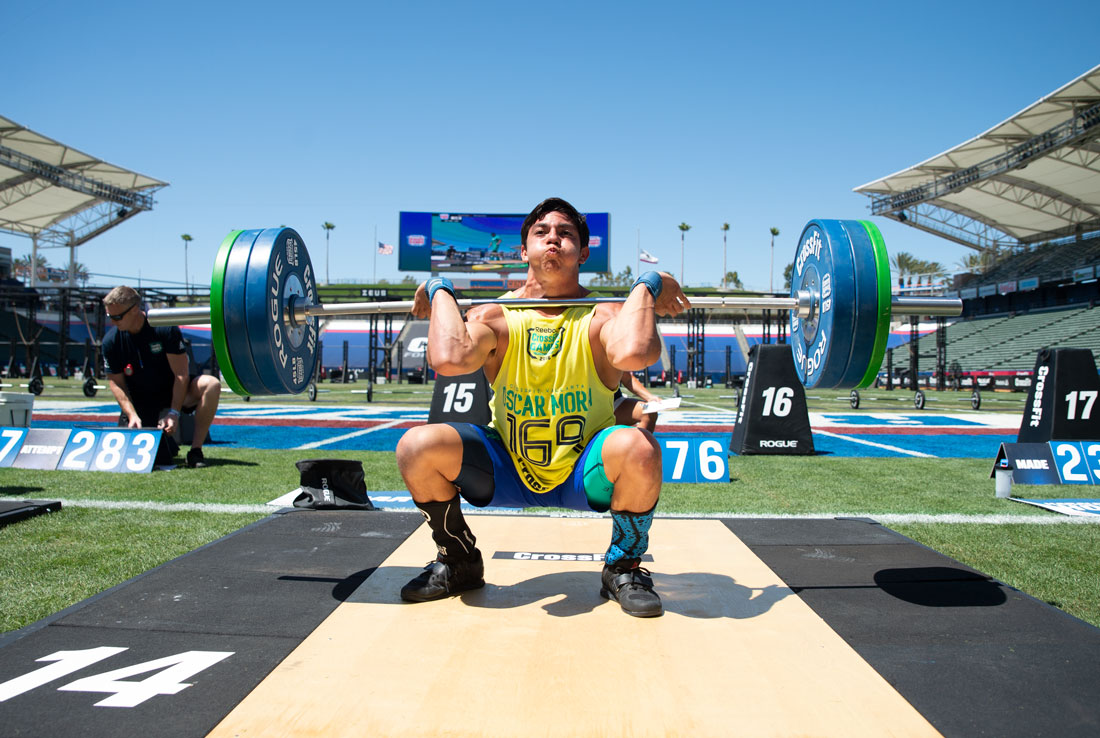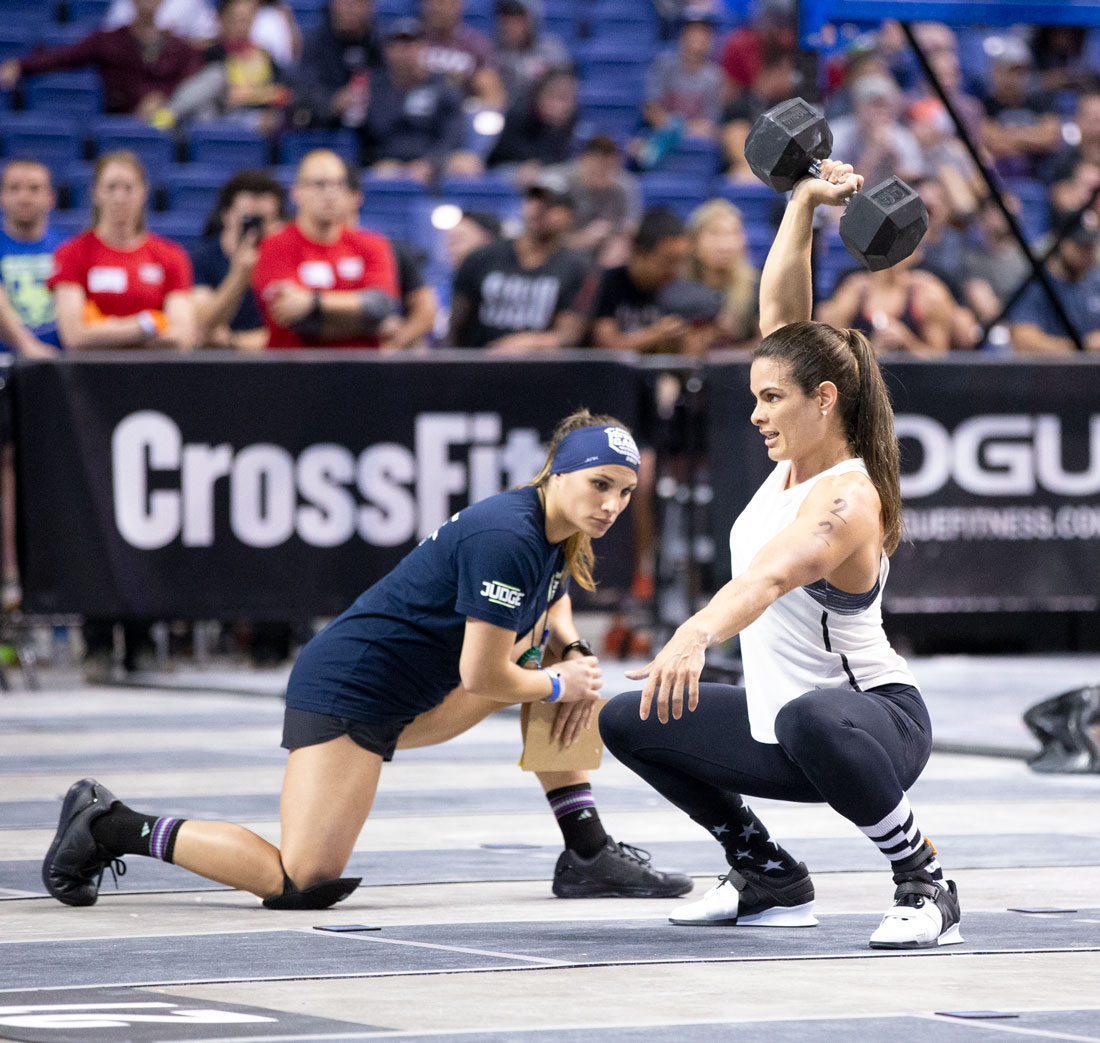One.
That’s what 40 men, 40 women and 30 teams are each vying for at this year’s Latin America Regional: a single qualifying spot for the CrossFit Games in Madison, Wisconsin.
Only one man, one woman and one team will succeed.
“It’s kind of tough just to think that they only take one, because maybe they take one and it’ll be his first Games, and it’s just hard to do good … (at) your first Games,” said 28-year-old Emmanuel Maldonado, who sits in seventh place among the men in the Central America Region.
He jokingly added: “Maybe push (Games Director Dave) Castro to take two or three (competitors).”

This year’s Latin America Regional will be May 25-27 at Arena Carioca 1, an indoor stadium in Rio de Janeiro, Brazil, that hosted various events during the 2016 Summer Olympics.
Maldonado, owner of CrossFit SJU in Puerto Rico, competed in the Latin America Regional in 2013 and 2014, placing seventh and first, respectively. He finished 40th at the 2014 Games.
Unlike most other Regionals that include an equal number of athletes from each of two regions, the Latin America Regional includes 15 men, 15 women and 10 teams from the Central America Region, and 25 men, 25 women and 20 teams from the South America Region. Competitors hail from Argentina, Brazil, Guatemala, Mexico, Puerto Rico, Uruguay and the Virgin Islands, among many other countries and places.
Luis Oscar Mora, No. 2 among the men in the Central America Region, deemphasized the Regional’s sole qualifying spot.
“The Open is very different from Regionals,” he said in Spanish. “The Open only indicates who’s best in the Open. … All of us start from zero at Regionals.”
The 19-year-old Mexican finished fourth at the 2016 Games in the Teenage Boys 16-17 Division.

Goals and Expectations
Shortly before the 2015 Open, Maldonado ruptured a biceps tendon. The recovery took nearly eight months.
“I lost a lot of weight,” he said.
Although he kept training and maintained “a good engine,” his strength diminished. By the next year, he placed 16th in his region in the Open. But it wasn’t good enough to qualify for Regionals, as Games organizers only invited the region’s top 10 male athletes. Then, in 2017, a 174th-place finish in the Open’s final workout sunk him from the top 20 to 35th place.
As a result, Maldonado’s long-term objective has been modest: Get back to Regionals.
“I want to make a good statement,” he explained. “You always want to go on and win, but my main goal was to get back to Regionals since I got hurt, and so I made that happen. So now it’s just enjoy each day and just go with it and try to do my best. Stay healthy and if it happens, it happens. If not, I’m happy with just going.”
Maldonado is an athlete who enjoys the process. This year, part of his process is spending a week training with Mora in Arizona before traveling to Brazil.
“I just want to make every day count and stay healthy. So maybe if it’s my last one, have fun with the weekend and see how it goes,” Maldonado said.
For Mora, the Regional will be the first he’s ever attended—as a competitor or as a fan. He’s counting on his 2016 experience to help him manage the pressure.
“The mistakes I made, I’m not going to make them again,” he said.
Both men said they expect to see heavy loads, unconventional implements, dumbbells and high-skill movements—such as handstand walks—as part of the Regional programming.
“Everything that’s heavy and (requires) skill work,” Mora said.

Renata Pimentel, meanwhile, had not yet given herself an opportunity to ponder the Regional as of mid-April. Pimentel is No. 1 among the women in South America.
“I'm preparing myself to compete in the (Age Group Online Qualifier), and I'm very focused on it,” said the 35-year-old via email on April 22.
As of April 24, Pimentel had qualified for the Games in the Women 35-39 Division, pending score verification. She finished in fifth place worldwide, 5 points ahead of the legendary Becca Voigt.
Let the Festivities Begin
Regardless of where they finish, both Maldonado and Mora are expecting a party.
“I feel like it’s gonna be good chaos,” Maldonado said with a laugh.
He competed in past editions of the Latin America Regional hosted in both Ecuador and Chile, and he also visited the South Regional in 2015 that included Latin American athletes. The difference was notable, he said.
U.S. fans cheer at a “normal” level, Maldonado said. Latin American fans, however, bring drums, trumpets and fly their countries’ flags.
“You can feel the difference,” he noted. “They’re gonna be fun.”
For her home country to be hosting the Regional is special for Pimentel.
“An event of this magnitude occurring again here, and in Brazil, it gives an extra boost to both the competitors and those who will watch,” she said.

Since 2009, Latin American athletes have competed in a “South America Regional,” a “Central/South America Regional” and a “Latin America Regional,” all hosted somewhere in Latin America. In 2015-2017, Latin American athletes competed at the South Regional, which was held in the U.S.
Maldonado welcomed the return of the “Latin America Regional.”
“I feel like it’s more cool to say that ‘I went to Brazil and did Regionals,’ than just, ‘I went to Texas,’” he said. “You’re working out with a lot of people from all over the continent, so it’s a whole different game.”
While Mora is looking forward to a more festive atmosphere and being surrounded by people who speak his native language, he said the location doesn’t change his approach.
“I’m going with my focus on competing,” he explained. “No matter where it is, I’m going to do what I’m going to do.”
To learn more about the Latin America Regional or buy tickets for the event, click here.







